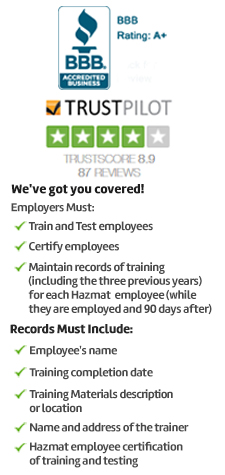
OSHA Aerial Boom Lift Safety

Aerial Boom Lifts have various applications across industries. It is very important that people owning, supervising or operating such lifts must know the safety regulations and hazard management procedures associated with it.
We offer OSHA regulated Aerial Boom Lift Safety course for people to understand the safety standards and practices and provide secure environment around the workplace. The online course offers a complete overview on the operating procedures, responsibilities of owners, operators and managers, hazard and risk management, safety condition to operate boom lifts, reasons for accidents and mechanical failure and mishap control procedures.
Governing regulations
OSHA has formulated safety regulations for operating aerial boom lifts which are classified under- 29 CFR 1910.67, 1910.269; 1926.453, 1926.454, 1926.502, and 1926.503.
Course Overview
Though aerial lifts and operating platforms are many, the course specifically concentrates on Aerial Boom lifts which are predominantly used in many industrial environments. Aerial lifts have a platform or basket for people to stand or carry things which are connected by a hydraulic or electrical lifting system or boom. These lifts are used to carry workers, materials and light machinery to elevated and most difficult terrains where manual operations are difficult. The course addresses various aspects of safety procedures, legislations, safe operating practices, safety management and responsibilities concerned to OSHA Aerial Lifts.
Who Must Take this Course?
Designed especially for operators, drivers, supervisors and owners, this online OSHA Aerial Boom Lift Safety course aims to create safe work culture by reducing hazards and improving safety standards.
Course Format
Our OSHA Aerial Boom Lifts Safety course contains expert-made content with informative graphical and audio presentations and good number of practice questions to clear the final exam.
Every successful candidate will be provided with completion certificate along with a wallet card which they can get printed for future use.
Continuing education credits?
Each learner will get 0.2 CEUs (or 2 CMEs) for successfully completing this course.
Topics Covered
- Introduction to Aerial Boom Lift Safety
- What Is an Aerial Lift?
- Aerial Boom Lifts
- Common Terms
- Trained and Qualified Operators
- OSHA Regulations
- ANSI Standards
- Compliance
- Responsibilities
- Responsibilities-Facility Owners and Managers
- Responsibilities-Supervisors
- Responsibilities-Operators
- Training and Credentials
- Retraining and Recordkeeping
- Aerial Lift Fatalities and Injuries
- Classification of Hazards
- Tip-overs and Collapses
- Uneven Surfaces
- Outriggers, Brakes, and Wheel Chocks
- Overextension
- Load Limits
- Use for Transport of Materials
- Fall Protection
- Guardrails
- Three-point Contact
- Fall-Protection System
- Personal Fall Protection Equipment Terms
- OSHA Fall Protection Regulations
- Common Fall Restraint and Arrest Options
- Electric Shock Hazards
- Overhead Power Lines
- Insulated Boom Lifts
- Minimum Safe Distances
- Working with Power Tools
- General Precautions
- Inclement Weather Hazards
- Snow or Ice on the Platform
- Hazardous Atmosphere
- Nearby Work Hazards
- Collisions
- Entanglement
- Falling Objects
- Safety Features
- Controls
- Emergency Stops
- Interlocks
- Hydraulic and Pneumatic Components
- Operator’s Manual, Markers, and Decals
- Inspections and Maintenance
- Worksite Inspections
- Daily Inspections
- Periodic Inspections
- Annual Inspections
- Maintenance
- Defective Aerial Boom Lift
- Safety Procedure after Mechanical Failure
- Inspection and Maintenance Records
- Safe Work Practices
- Personal Protective Equipment
- Safe Start-up Procedures
- Safe Shut-down Procedures
- Safe Work Practices during Operation
- Working near Traffic
- Summary
- Additional Resources
- Exam

 NEBOSH CERTIFICATE
NEBOSH CERTIFICATE NEBOSH DIPLOMA
NEBOSH DIPLOMA IOSH
IOSH SAFETY DIPLOMA
SAFETY DIPLOMA CPD UK
CPD UK ROSPA UK
ROSPA UK FOOD SAFETY
FOOD SAFETY 



